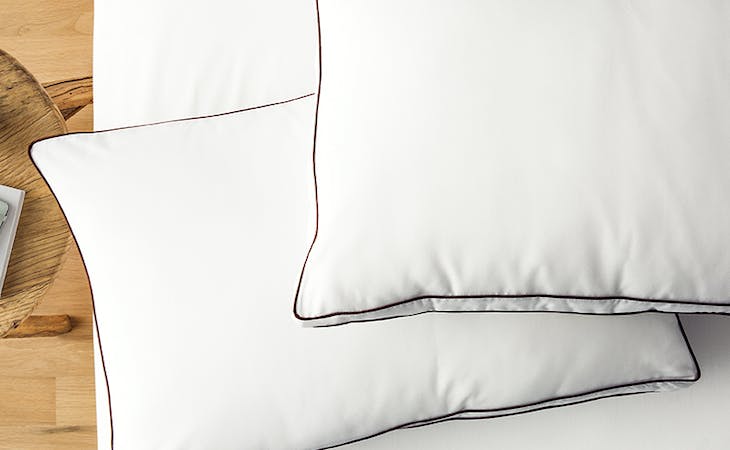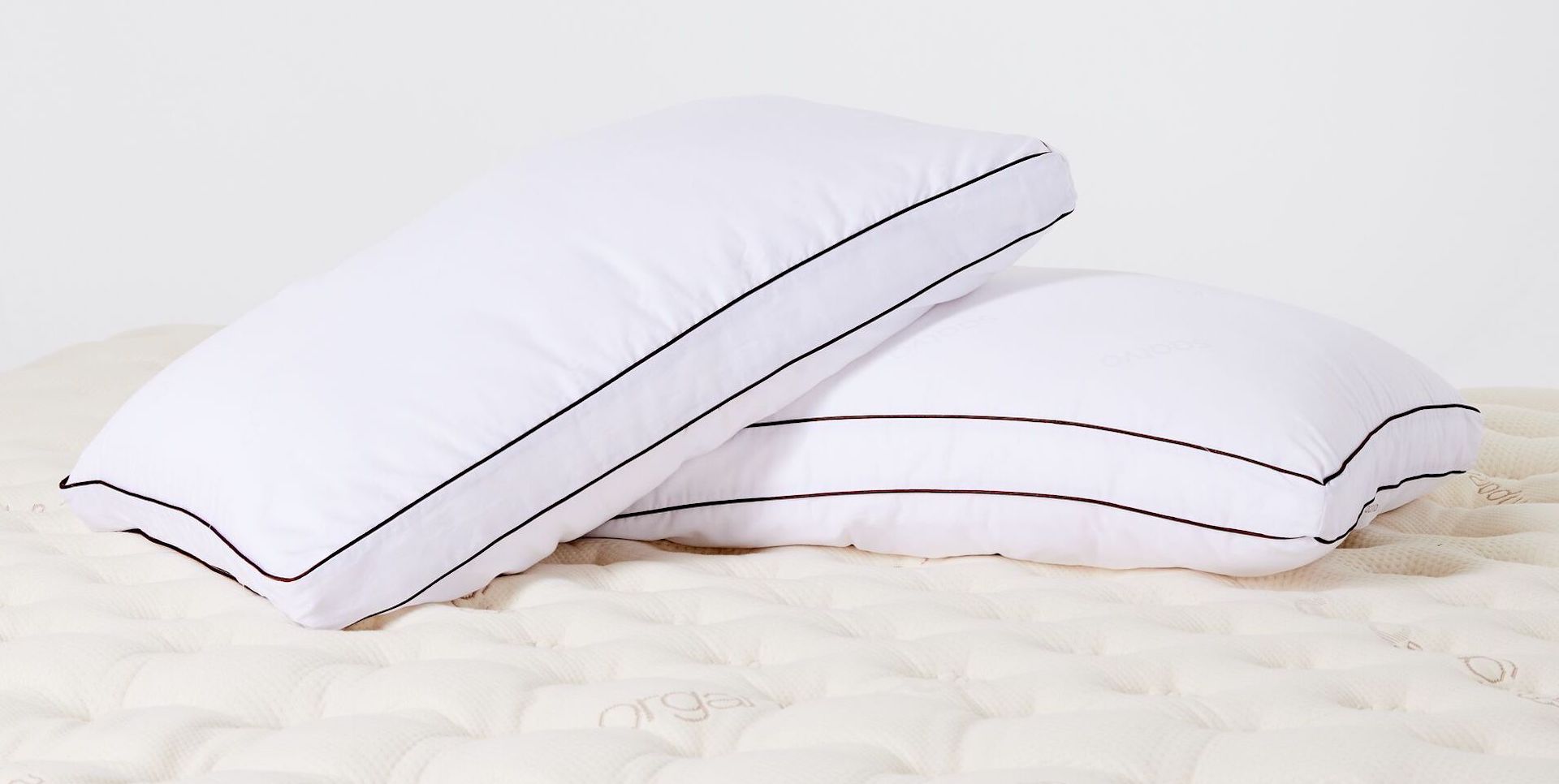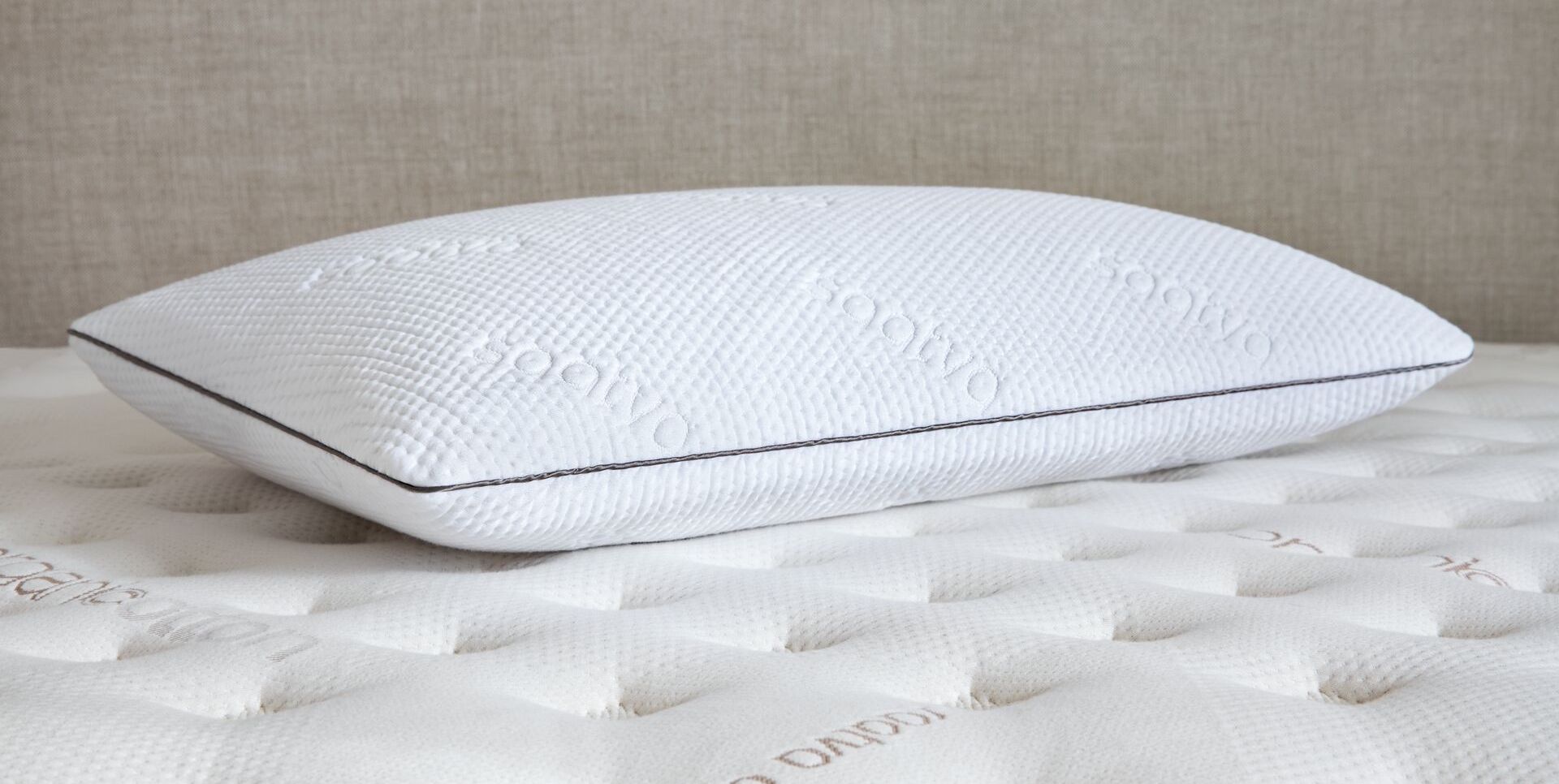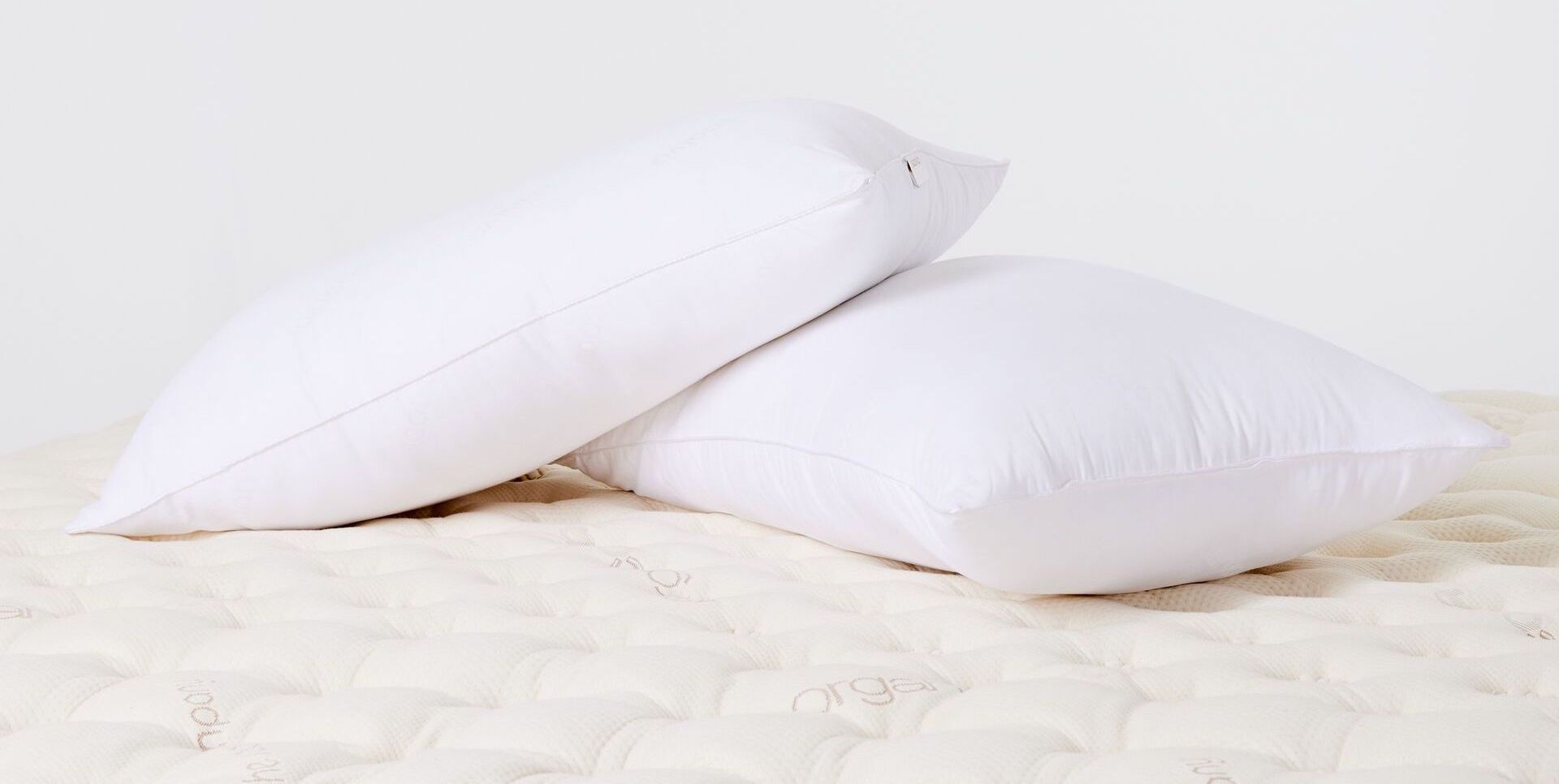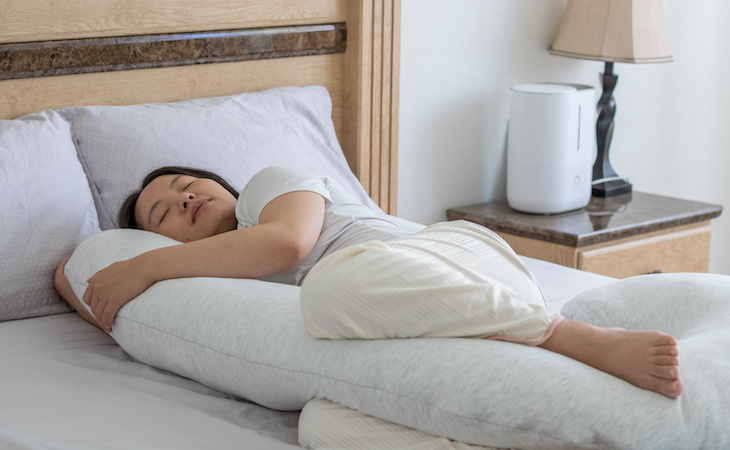If you’ve been getting the recommended amount of sleep, have invested in a quality mattress, and follow a restful bedtime routine but are still waking up exhausted, your pillow type may be at fault. Believe it or not, the little rectangle under your head can make or break your sleep. But how do you know what kind of pillow is right for you? Different types of pillows have varying feels and differing levels of support, among other various qualities. With so many options out there, things can quickly become confusing. Here, learn about the most common types of pillows so that you can find the right one for you.
Different types of pillow fillings
You have a lot of choices when it comes to pillow filling, and different pillow types each have their own unique qualities. Whether you want something hypoallergenic or super-supportive for your neck, or maybe even something to help you sleep cool, there is a pillow out there with a filling that is best suited to your needs.
Down and feather pillows
Down and feather-filled types of bed pillows are soft, light, cuddly, and highly malleable. Down comes from the fluffy protective undercoats of ducks or geese, while feathers are the outer plumage. Feathers are coarser than down and also less durable. Many down pillows contain a mixture of down and feathers, and most feather pillows contain some down as well. The higher the ratio of down to feathers (the pillow should list it), the softer your pillow will be.
When comparing down pillows, make sure to look at the fill power. That’s the measure in cubic inches of the amount of space one ounce of down will fill. In layman’s terms, a higher fill power offers more warmth with less weight. Higher fill also helps the pillow retain its shape better and makes it more durable. The best quality down pillows have a fill power of 700 or higher; standard fill power is around 600.
Down and feather pillows are good options for those looking for lots of softness and cushioning rather than a ton of structure. Although firmer down and feather pillows exist, they’re not the norm. If you have allergies, look for assurances that the down in the pillow you’re interested in buying is sterile or hypoallergenic. If you don’t want to take a chance with real down or feathers, synthetic options exist, although the cheapest options aren’t very durable.
Related: Tips for finding a cozy comforter
Memory foam pillows
Memory foam pillows are made from polyurethane and provide great support because they conform to the shape of your head and neck. They are good for back sleepers and those with neck, jaw, or shoulder problems.
The downside of the memory foam pillow type is that it can be too firm, especially for stomach sleepers, and not very breathable. Another potential drawback to this type of pillow is that though memory foam readjusts as you change position, and it sometimes takes some time to do so—meaning it may not be the best option if you move around a lot in your sleep. (Learn if a firm vs. soft pillow is right for you.)
Latex pillows
Natural latex is a material made from the sap of rubber trees. It’s hypoallergenic and resistant to dust mites and mildew, making it an excellent option for those with allergies. (Although if you’re allergic to latex, you’ll want to steer clear.) Similar to memory foam, latex conforms to your head and neck, ensuring optimal support—but it’s cooler than memory foam because it’s more breathable.
When buying a latex pillow, make sure it is truly natural latex. Latex blend pillows are blended with polyurethane foam, reducing the natural beneficial qualities of latex.
Buckwheat pillows
Not just an exotic label on a health food store shelf, buckwheat has made its way into pillows—and that’s a good thing. Buckwheat pillows are natural fill pillows containing buckwheat hulls (the hard outer shells of buckwheat seeds) that are natural, plant-based, breathable, hypoallergenic, and conform to the head and neck to help keep your spine aligned while you sleep. That said, buckwheat pillows are harder than other types of pillows and can be too noisy for some people.
Related: Mattress toppers: a buyer’s guide
Wedge pillows
Wedge pillows are orthopedic pillows designed for people with chronic pain issues. They are shaped like a triangle, come in a variety of sizes, and are made of memory foam or a combination of foam and fiberfill. Placing them to support specific areas of your body helps improve blood flow and alleviate pressure points in most sensitive areas. For instance, a large wedge pillow used to elevate your upper body is said to improve sleep apnea and help with acid reflux. Wedge pillows can also be used to elevate your belly in the last stages of pregnancy, and with the right degree of inclination under your back may even help alleviate lower back pain.
Body pillows
Want to place your pillow everywhere at once? Then a body pillow might be right for you. Body pillows are 48 inches or longer and are perfect for those who like to have several areas of their body supported at once. They can be U-shaped or C-shaped and are filled either with shredded memory foam and/or polyester fibers. A large U-shaped body pillow can provide support under your head, fit between your knees, and elevate your feet, aligning your spine and alleviating pressure points. Body pillows are perfect for people with back pain and pregnant women.
Neck pillows
Using the right kinds of pillows can greatly improve or even eliminate your neck issues, while the wrong one will certainly make matters worse. Pillow thickness is important if you have neck pain. If a pillow is too thick or too thin, your neck and spine will be misaligned, putting a strain on your neck. A contoured neck pillow conforms to your head and neck for support. You can find contoured neck pillows made from materials like memory foam and latex. Keep in mind that latex is more breathable pillow material than memory foam, so it may be the better option for you if you tend to sleep hot. (Here’s more on how to choose the best pillow for neck pain.)
Related: What’s the proper way to sleep on a pillow?
Sleep apnea pillows
If you have sleep apnea and use a CPAP machine, you might consider getting a sleep apnea pillow. Research shows that people who wear a CPAP mask are more comfortable when using a special sleep apnea pillow. Quality CPAP pillows are made with either memory foam or fiberfill and come in a variety of shapes and sizes. They’re designed to provide firm support and help keep the mask steady whatever your sleeping position. You can, of course, use a sleep apnea pillow without your CPAP machine. In that case, it will simply help position your neck in such a way as to keep your airway open.
For more advice on choosing the right pillow, here’s how to pick the right pillow for your best night’s sleep.

